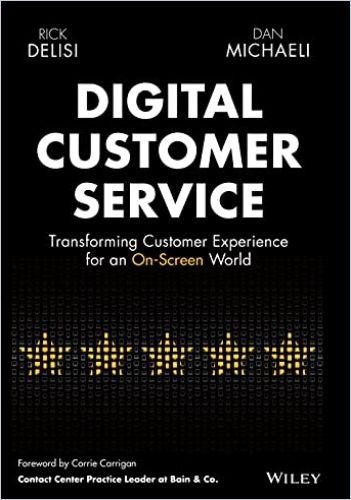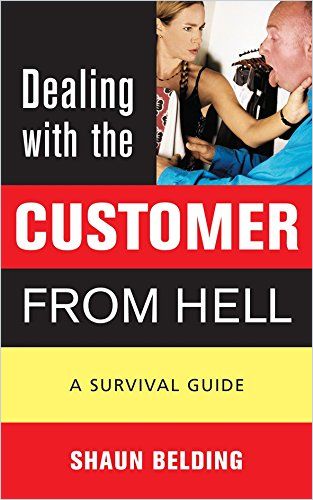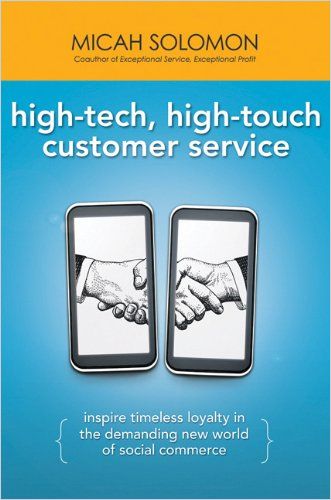How To Ditch Customer Service From Hell

“We really apologize for the inconvenience this has caused you. As a consumer myself, I cannot imagine how upsetting it is.”
This is the line my husband got about one hour into a chat with the online customer service of a major tech company. It was the exact phrase he got from the third person assigned to his case a day later, and from the fifth and the seventh…
Eventually, this chat marathon would turn into a grudge match – between a relentless David against an equally immovable Goliath – pity the army of customer service reps caught in the middle, their only defense being unfailing politeness.
A 70-Dollar TV Streaming Stick
But let’s start from the beginning: We had bought a 70-dollar TV streaming stick that was bricked after a month of light use. Not boding well for the manufacturing quality, and generally unimpressed with the performance, we just wanted to return the thing and be done with it. Yet the company had ruled out the option of returning the device after a 14-day “remorse period,” and at least eight different customer service reps in various departments claimed that, regrettably, they were unable to act beyond their scope, disrupt their processes and transfer the issue to someone who could do anything other than ship out a replacement device.
Then, miraculously, after more than 13 hours over a dozen chats, a refund was issued.
Curiously, there was never an explanation of why it was now possible to issue the refund, simply an email announcing that they had processed it. Possibly, somebody finally realized that my hard-headed husband would not give up (a fact he had repeated on several occasions to the customer service agents). The resulting 33 pages of closely written chat transcripts are a sad testimony to misplaced corporate resources.
Tilting at the Windmill
Here are some of the best bits (about halfway through the process):
I’m sorry but there is no option for us to process the return and the refund.
After being presented with the same text modules over and over again, my husband was seriously wondering whether he had been talking to an automated chat box the whole time.
Are you an AI?
I’m a live person.
Great! So why don’t we try some new answers. I have already shown you that I can predict where we are in the script. Your script is designed to wear me down, but at this point it is a point of principle. The reason I question whether you were an AI is that the responses are almost verbatim what was said in the same order six hours ago. Clearly it makes no difference what I say.
Is There Anybody Out There?
He repeatedly pointed out that it made no business sense whatsoever to waste hundreds of dollars in billable hours on producing livid customers who will never want to deal with that firm again.
Clearly, your company’s stop-loss system lacks any intrinsic intelligence. A system that is designed to hold onto my 70 bucks will probably not back down at this point, so my only recourse is to keep running up the costs to the system. I have already wasted many times the 70 dollars chatting, but I have to have the hope that maybe your company can understand why it is killing its own business.
More than seven hours into the chats, he tried to catch the attention of a supervisor who might have been monitoring them:
I’ll donate the refund to the charity of your choice. Any social causes you feel strongly about. How about a union? Most places 70 dollars is a big part of union dues.
After being prompted to spell out his problem anew for the umpteenth time, he again tried to trigger those elusive superiors, who, for some mysterious reason, had always stepped out of the office whenever he wanted to talk to them.
Your company seems to be happy to collect all sorts of information, but that never seems to be available to its support team. I know that you are stuck in a system that you can do nothing about, but the fact that no supervisors seem to ever be in the workplace should be a concern. Are they all on leave or just getting a bear claw?
The more they stonewalled, the more determined he got. His jabs against the dysfunctional structure, airtight corporate silos and silly procedures rarely elicited a response from the support staff. Except when one person dropped his guard for a second:
We are all part of the system at the end of the day. I understand the point.
What Is to Be Done?
Wait a sec! Is that really all we have to hope for? To be sucked into the vortex of a closed-loop communication system where the sole purpose of customer support is to beat your client into submission? Are we all supposed to resign ourselves to a system that makes us question getting up in the morning?
Many people seem to share our experience with awful customer service.
The 2023 National Customer Rage Survey shows that Americans are more unhappy with the customer service they’re getting than ever.
At the same time, there’s no shortage of books and articles with advice on always putting the customer first, adopting the golden rule and “treating customers as you would like to be treated.”

The Future of Customer Service Is Fast, Lean, and Agile
The Boston Consulting GroupFor example, the authors of The Future of Customer Service Is Fast, Lean, and Agile claim that good service involves four key features: “end-to-end servicing,” meaning that requests rarely change hands before they get resolved; “autonomy and accountability,” providing support agents with the power to resolve issues without seeking approval from their superiors; “customer-centricity,” such that support staff are able to understand their customers’ needs and get rewarded for solving their problems; and “continuous improvement,” with each system having built-in feedback loops, so teams can see how they are faring and how to improve their service.
Needless to say, our experience didn’t meet a single one of those criteria.
Big Data and AI Won’t Save Us
Then, there is the prerogative of a seamless digital experience. Undoubtedly, hanging on the line, listening endlessly to a recording stating, “Your call is very important to us,” gets most people’s blood boiling.

We usually don’t like to start our query on a chat, only to be referred to email or receive an offer for a call-back when agents try to get us off their backs.
Yet this is exactly what happened over and over again in my husband’s interaction with that company – which claims to be one of the greatest digital innovators of all time. It is not enough to keep adding digital layers to traditional service channels. They must also be properly integrated.

How Generative AI Is Already Transforming Customer Service
The Boston Consulting GroupWhich begs the question: Will AI help create a better experience? Maybe. And maybe not. There’s no doubt that large language models (LLMs) like ChatGPT are already transforming the industry, and it’s happening fast. Still, if the goal of AI implementations is only to respond with pages of text that don’t resolve a customer’s issue rather than short texts, it is hard to see how they will offer a better experience. After all, the issue was not that the customer service agents could not understand the issue or comprehend solutions that would have ended the interaction quickly, but rather that they were prevented from doing what needed to be done.
Your first impression is important, but so is your last
To be sure, the producer of the streaming stick couldn’t have left us with a worse impression. My husband, who over the years had purchased a number of products from the company, realized that he should never, in future, buy directly from the online store, as a third-party retailer was more likely to offer reasonable service.
Having worked at a retail counter he knows that the service agents were not at fault. He sympathized with their plight in having to deal with him and probably having their work metrics degraded.
Still, the company had created this nightmarish system and he could only hope that somewhere in this tech behemoth the aberrant metrics might cause a policy rethink. It is probably too much to hope for since, after all, how many people in their right mind would go through 13 hours of support chats over days – just to prove this point? Certainly, no one for whom 70 bucks could make a significant difference.
Why is this becoming our new normal?
Though inconsequential at first glance, I think that the story points to systemic problems in the way our service economies are set up, as businesses’ support systems often work against the interests of their most vulnerable customers. Clearly, my husband’s story – tiny customer David defeating a corporate Goliath – doesn’t fit that bill. But that doesn’t mean resistance is always futile. Friends and family members have told me many hair-raising tales of godawful customer service, and their stories convinced me that companies can and must do better.
For example, a friend recently had to troubleshoot for a sick father. Hard of hearing and elderly, he could not navigate his bank’s two-factor authentication system. Living alone in a rural area, he had to depend on ordering food and medicine online, but the bank’s credit card verification hurdle was making this impossible.
For weeks on end, my friend pleaded with the bank’s support teams to restore his access to banking services despite the repeated failure of two-factor authentication – chatting, emailing and telephoning with countless compassionate agents (“As a daughter myself, I cannot imagine how upsetting this is to you…”), but each interaction ended once the service call ended and the agent was never to be found again. She had to start from the beginning every single time. At some point, she even broke down crying during a call. To no avail.
‘They broke me’, she told me. My friend ended up changing her father’s bank and getting him a new credit card, but one month later he passed away, and the memory of her last interactions with him are forever tainted by this traumatic experience.
The Burning Question
In Dealing with the Customer from Hell, Shaun Belding suggests six steps to resolve customer problems: listening, echoing, sympathizing, thanking, evaluating and responding. It appears that many companies go out of their way during their first four steps, while entirely falling short on the last two. They ignore the fact that “most customers from Hell are no different from you or me,” as Belding observed.

Tech firms have demonstrated that no company has a lock on the customer and that even venerable brands can lose out if a nimble competitor offers a better deal. Service can seem like a cost center and an afterthought next to the glittering products promoted by media campaigns, but if you keep burning your customers, soon you won’t have many.
It is high time for companies to change their priorities.
Read more about the topic in the following getAbstract summaries:














